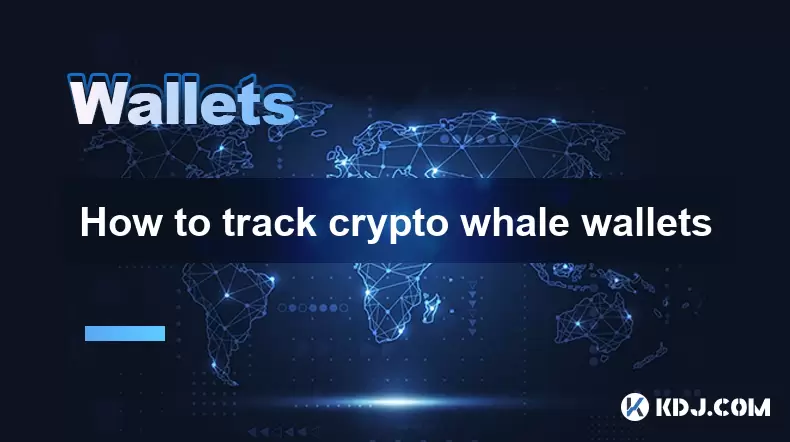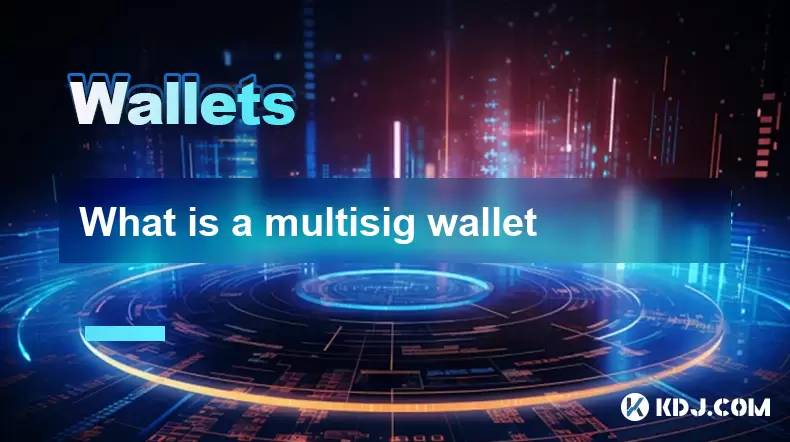-
 Bitcoin
Bitcoin $118,841.1054
1.02% -
 Ethereum
Ethereum $3,364.2689
7.44% -
 XRP
XRP $3.0337
3.93% -
 Tether USDt
Tether USDt $1.0004
0.04% -
 BNB
BNB $708.2059
2.49% -
 Solana
Solana $173.2385
5.74% -
 USDC
USDC $0.9999
-0.01% -
 Dogecoin
Dogecoin $0.2121
6.85% -
 TRON
TRON $0.3090
2.81% -
 Cardano
Cardano $0.7628
2.25% -
 Hyperliquid
Hyperliquid $46.8391
-2.08% -
 Stellar
Stellar $0.4537
0.15% -
 Sui
Sui $3.9529
-2.88% -
 Chainlink
Chainlink $16.6414
3.72% -
 Hedera
Hedera $0.2354
1.52% -
 Bitcoin Cash
Bitcoin Cash $499.1285
0.43% -
 Avalanche
Avalanche $22.6400
0.57% -
 Shiba Inu
Shiba Inu $0.0...01438
4.88% -
 UNUS SED LEO
UNUS SED LEO $8.8507
-0.64% -
 Toncoin
Toncoin $3.1498
2.35% -
 Litecoin
Litecoin $97.4954
1.21% -
 Polkadot
Polkadot $4.1541
1.50% -
 Monero
Monero $331.4406
-1.03% -
 Pepe
Pepe $0.0...01350
5.24% -
 Uniswap
Uniswap $8.9103
-5.01% -
 Bitget Token
Bitget Token $4.7540
4.51% -
 Dai
Dai $0.9999
-0.02% -
 Ethena USDe
Ethena USDe $1.0008
0.00% -
 Aave
Aave $322.3328
-1.63% -
 Bittensor
Bittensor $431.8026
-0.50%
How do I receive tokens in MetaMask?
MetaMask simplifies receiving ERC-20 and ERC-721 tokens; ensure your wallet is set up, and add tokens manually if they don't appear automatically.
Apr 19, 2025 at 03:09 am

Receiving tokens in MetaMask is a straightforward process that allows you to manage your cryptocurrency portfolio efficiently. Whether you are receiving tokens from an exchange, a friend, or as part of a decentralized application (dApp) transaction, MetaMask provides a user-friendly interface to handle these operations. In this article, we will guide you through the steps to receive tokens in MetaMask, ensuring that you can seamlessly integrate new tokens into your wallet.
Understanding Token Types in MetaMask
Before diving into the process of receiving tokens, it's important to understand the types of tokens you can receive in MetaMask. MetaMask supports various token standards, primarily ERC-20 and ERC-721 tokens on the Ethereum network. ERC-20 tokens are fungible, meaning they are interchangeable and represent a specific value, such as DAI or USDT. On the other hand, ERC-721 tokens are non-fungible, meaning each token is unique and cannot be exchanged on a one-to-one basis, such as NFTs (Non-Fungible Tokens).
Preparing Your MetaMask Wallet
To receive tokens in MetaMask, you need to ensure that your wallet is set up and ready to go. Here are the steps to prepare your MetaMask wallet:
- Download and Install MetaMask: If you haven't already, download the MetaMask extension for your browser or the mobile app from the respective app stores.
- Create or Import a Wallet: Either create a new wallet or import an existing one using your seed phrase. Make sure to securely store your seed phrase.
- Connect to the Ethereum Network: Ensure that your MetaMask wallet is connected to the Ethereum mainnet or the appropriate network for the tokens you are receiving.
Receiving ERC-20 Tokens
Receiving ERC-20 tokens is a common scenario, and MetaMask makes it easy to add these tokens to your wallet. Here's how you can do it:
- Get the Sender's Details: Ensure you have the sender's Ethereum address and the token contract address. The sender will need your Ethereum address to send you the tokens.
- Initiate the Transfer: The sender will initiate the transfer using the token contract address and your Ethereum address. This can be done through an exchange, a dApp, or directly from another wallet.
- Check Your Wallet: Once the transaction is confirmed on the blockchain, the tokens should appear in your MetaMask wallet. If they do not appear automatically, you may need to add the token manually.
Adding Tokens Manually in MetaMask
If the tokens do not appear in your wallet automatically, you can add them manually. Here's how to do it:
- Open MetaMask: Click on the MetaMask extension in your browser or open the mobile app.
- Navigate to Add Token: Click on "Add Token" at the bottom of the asset list.
- Search for the Token: If the token is popular, you can search for it by name. If not, switch to the "Custom Token" tab.
- Enter Token Details: Enter the token contract address in the "Token Contract Address" field. MetaMask should automatically fill in the Token Symbol and Decimals of Precision. If it does not, you will need to enter these manually.
- Add the Token: Click "Next" and then "Add Tokens" to complete the process. The token should now appear in your asset list.
Receiving ERC-721 Tokens (NFTs)
Receiving ERC-721 tokens, such as NFTs, follows a similar process but with a few differences due to their unique nature. Here's how to receive NFTs in MetaMask:
- Get the NFT Details: Ensure you have the sender's Ethereum address and the NFT contract address. The sender will need your Ethereum address to send you the NFT.
- Initiate the Transfer: The sender will initiate the transfer using the NFT contract address and your Ethereum address. This can be done through a marketplace, a dApp, or directly from another wallet.
- Check Your Wallet: Once the transaction is confirmed on the blockchain, the NFT should appear in your MetaMask wallet under the "Collectibles" tab. If it does not appear automatically, you may need to add the NFT manually.
Adding NFTs Manually in MetaMask
If the NFT does not appear in your wallet automatically, you can add it manually. Here's how to do it:
- Open MetaMask: Click on the MetaMask extension in your browser or open the mobile app.
- Navigate to Add Collectible: Click on "Add Token" at the bottom of the asset list, then switch to the "Collectible" tab.
- Enter NFT Details: Enter the NFT contract address in the "Address" field. MetaMask should automatically fill in the Token ID. If it does not, you will need to enter this manually.
- Add the NFT: Click "Next" and then "Add" to complete the process. The NFT should now appear in your "Collectibles" tab.
Verifying Token Receipt
After receiving tokens, it's crucial to verify that the transaction was successful and that the tokens are in your wallet. Here's how to do it:
- Check Transaction History: In MetaMask, navigate to the "Activity" tab to see your transaction history. Look for the transaction that corresponds to the token transfer.
- Verify Token Balance: Go to the "Assets" tab to see your token balance. Ensure that the token balance reflects the amount you were supposed to receive.
- Use a Blockchain Explorer: For added security, you can use a blockchain explorer like Etherscan to verify the transaction details. Enter your Ethereum address in the search bar to see all transactions associated with your address.
Frequently Asked Questions
Q: Can I receive tokens on networks other than Ethereum in MetaMask?
A: Yes, MetaMask supports multiple networks beyond Ethereum, such as Binance Smart Chain, Polygon, and others. To receive tokens on these networks, ensure your MetaMask wallet is connected to the appropriate network and follow the same steps outlined for receiving ERC-20 or ERC-721 tokens.
Q: What should I do if I receive tokens but they do not appear in my MetaMask wallet?
A: If tokens do not appear in your wallet, try adding them manually using the token contract address. If the issue persists, ensure that the transaction was successful by checking the transaction hash on a blockchain explorer. If the transaction was successful but the tokens still do not appear, contact MetaMask support for further assistance.
Q: Is there a fee associated with receiving tokens in MetaMask?
A: Generally, there is no fee for receiving tokens in MetaMask. However, the sender may incur gas fees for initiating the transaction on the Ethereum network. Always check the network's current gas prices before initiating a transaction.
Q: Can I receive tokens from a centralized exchange directly into my MetaMask wallet?
A: Yes, many centralized exchanges support direct withdrawals to Ethereum addresses, including those generated by MetaMask. Ensure you follow the exchange's withdrawal process and enter your MetaMask Ethereum address correctly to receive the tokens.
Disclaimer:info@kdj.com
The information provided is not trading advice. kdj.com does not assume any responsibility for any investments made based on the information provided in this article. Cryptocurrencies are highly volatile and it is highly recommended that you invest with caution after thorough research!
If you believe that the content used on this website infringes your copyright, please contact us immediately (info@kdj.com) and we will delete it promptly.
- Coinbase's 'Everything App' Vision: Base App Unites Crypto, Social, and Payments
- 2025-07-17 08:30:13
- Aster: Revolutionizing DeFi with Perpetual Contracts on US Equities
- 2025-07-17 08:30:13
- Biofuel Services Powering Fleet Sustainability & Fuel Delivery: A New Era
- 2025-07-17 06:30:13
- Bitcoin, Altcoins, and Market Dominance: Decoding the Crypto Landscape
- 2025-07-17 06:30:13
- TikTok, Creators, and Records: A Wild Ride in the Digital Age
- 2025-07-17 06:50:13
- Roger Ver, Bitcoin Jesus, and the Extradition Lawsuit: A New York Minute on Crypto's Controversial Figure
- 2025-07-17 06:50:13
Related knowledge

What is a hardware wallet's secure element
Jul 11,2025 at 10:14pm
What is a Hardware Wallet's Secure Element?A hardware wallet is one of the most secure ways to store cryptocurrencies. Unlike software wallets, which ...

How to track crypto whale wallets
Jul 16,2025 at 10:00am
What Are Crypto Whale Wallets?Crypto whale wallets refer to large cryptocurrency holdings controlled by individuals or entities that have the potentia...

What is the difference between a custodial and non-custodial wallet
Jul 13,2025 at 03:21am
Understanding Wallet Types in CryptocurrencyIn the world of cryptocurrency, digital wallets play a crucial role in managing and securing assets. A wal...

What is a multisig wallet
Jul 16,2025 at 01:42am
Understanding the Concept of a Multisig WalletA multisignature (multisig) wallet is a type of cryptocurrency wallet that requires more than one privat...

How to add a new network to MetaMask
Jul 11,2025 at 11:42pm
Understanding the Need to Add a New NetworkWhen using MetaMask, a popular Ethereum-based cryptocurrency wallet, users often need to interact with diff...

How to add Ethereum L2 networks like Arbitrum to Trezor
Jul 11,2025 at 12:36am
What Is Ethereum L2 and Why Add It to Trezor?Ethereum Layer 2 (L2) networks, such as Arbitrum, are scaling solutions designed to reduce congestion on ...

What is a hardware wallet's secure element
Jul 11,2025 at 10:14pm
What is a Hardware Wallet's Secure Element?A hardware wallet is one of the most secure ways to store cryptocurrencies. Unlike software wallets, which ...

How to track crypto whale wallets
Jul 16,2025 at 10:00am
What Are Crypto Whale Wallets?Crypto whale wallets refer to large cryptocurrency holdings controlled by individuals or entities that have the potentia...

What is the difference between a custodial and non-custodial wallet
Jul 13,2025 at 03:21am
Understanding Wallet Types in CryptocurrencyIn the world of cryptocurrency, digital wallets play a crucial role in managing and securing assets. A wal...

What is a multisig wallet
Jul 16,2025 at 01:42am
Understanding the Concept of a Multisig WalletA multisignature (multisig) wallet is a type of cryptocurrency wallet that requires more than one privat...

How to add a new network to MetaMask
Jul 11,2025 at 11:42pm
Understanding the Need to Add a New NetworkWhen using MetaMask, a popular Ethereum-based cryptocurrency wallet, users often need to interact with diff...

How to add Ethereum L2 networks like Arbitrum to Trezor
Jul 11,2025 at 12:36am
What Is Ethereum L2 and Why Add It to Trezor?Ethereum Layer 2 (L2) networks, such as Arbitrum, are scaling solutions designed to reduce congestion on ...
See all articles

























































































